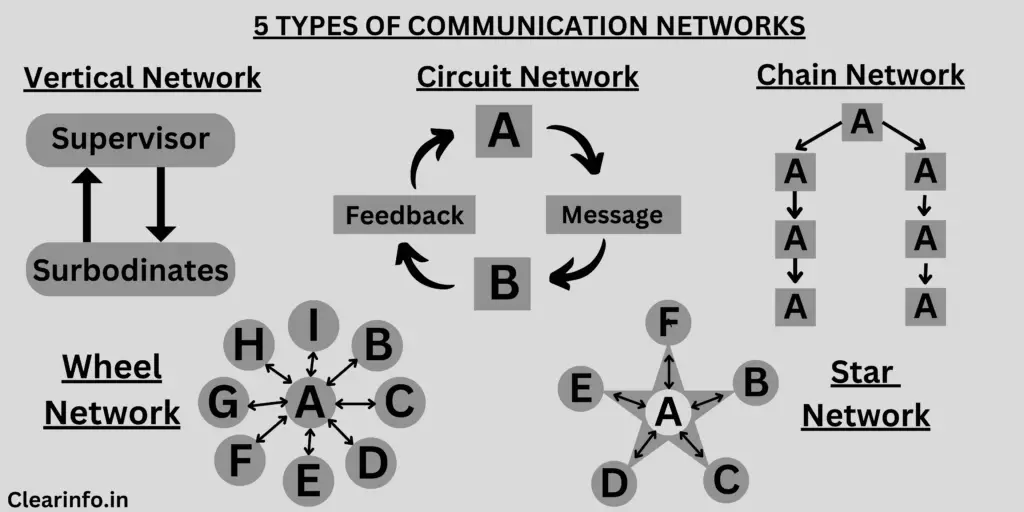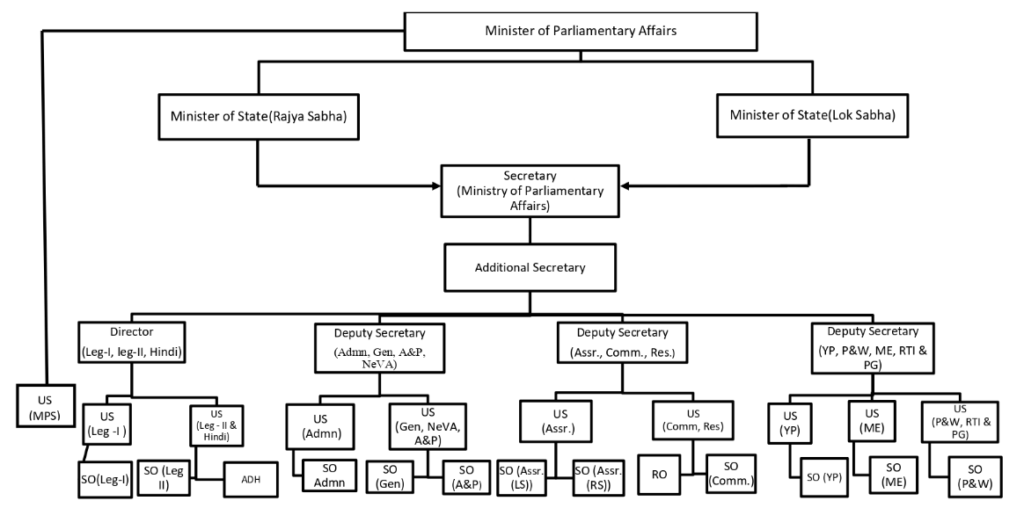Definition of communication network
“Communication networks are the structures or patterns of connections among individuals or groups that facilitate the exchange of information, ideas, and resources within an organization.” – Dorothy Marcic, Richard L. Daft
What is a communication network?
A communication network refers to an interconnected system that enables the exchange and flow of information among individuals, teams, and departments. The communication network within an organization consists of various components such as hierarchies, departments, teams, and individuals, each with specific roles and responsibilities.
It may include both formal channels, such as official memos, emails, and hierarchical reporting lines, as well as informal channels, such as casual conversations, social networks, and grapevine communication.
The communication network within an organization plays a crucial role in promoting information sharing, fostering teamwork, sharing organizational goals, and ensuring smooth operations across departments and teams.
Diagram of communication network

What are the 5 types of communication networks?
Communication networks play a crucial role in facilitating the flow of information within organizations. By understanding the different types of communication networks, organizations can optimize their internal communication and enhance collaboration among team members. Let’s explore five common types of communication networks:
1/ Wheel Network:
The Wheel Network is a communication network characterized by a central individual or hub that acts as the primary point of contact for all other members within the network. In this network, all communication channels flow through the central hub, and there are limited direct connections between other members. The central hub holds a position of authority or expertise, serving as a main point for information exchange.
Key Components and Structure:
- Central Hub: The central hub is the main individual who holds a central position within the network. They are connected to all other members and serve as the primary point for communication and coordination.
- Spoke Members: The spoke members are the individuals within the network who are connected directly to the central hub. They communicate with the hub to exchange information and may have limited direct communication with other spoke members.
- Communication Channels: The communication channels in a wheel network primarily involve the hub sharing information with the spoke members and receiving inputs or feedback from them. The spoke members typically do not communicate directly with each other.
Advantages and Disadvantages:
Advantages:
- Centralized Communication: The central hub ensures that information flows efficiently as it is directly conveyed to all members.
- Quick Decision-making: With a central point of contact, decision-making processes can be streamlined, leading to faster responses and actions.
- Clear Chain of Command: The hierarchical structure of the wheel network provides clarity in terms of authority and reporting relationships.
Disadvantages:
- Single Point of Failure: The wheel network is highly dependent on the central hub, and if the hub is unavailable or ineffective, communication and decision-making can be drastically hampered.
- Limited Member Interaction: Direct communication between members is restricted, leading to potential information gaps and reduced collaboration.
- Overburdened Hub: The central hub may become overwhelmed with information overload, as all communication flows through them.
Examples of Wheel Network:
- CEO and Department Heads: In large organizations, the CEO often acts as the central hub, communicating with department heads who act as the spoke members. The CEO pass on information, receives updates and makes decisions based on inputs from the department heads.
- Project Manager and Team Members: In project management, the project manager serves as the hub, coordinating and communicating with team members. The project manager conveys information, sets goals, and receives updates, while team members have limited direct communication with each other.
The wheel network is suitable for situations where clear direction and control are necessary, such as in hierarchical organizations or when a central authority figure is required. However, it may not be ideal when the central hub’s absence can significantly disrupt communication.
2/ Star Network:
The Star Network refers to a communication network structure where a central individual, typically a manager or supervisor, acts as the hub for information exchange within an organization. In this network, all communication channels flow through the central hub, and other members communicate directly with the hub rather than with each other. The hub serves as a primary point of contact, coordination, and decision-making.
Key Components and Structure:
- Central Hub: The central hub is usually a manager, team leader, or supervisor who holds a position of authority or expertise. They serve as the primary point of communication and coordination for the team or department.
- Team Members: The team members are connected directly to the central hub. They communicate with the hub to share information, seek guidance, provide updates, and receive instructions.
- Communication Channels: Communication channels within a star network involve the hub sharing information, assigning tasks, providing feedback, and addressing inquiries or concerns raised by team members. Direct communication between team members is limited, and most communication flows through the hub.
Advantages and Disadvantages:
Advantages:
- Clear Reporting Structure: The star network establishes a clear reporting structure within the organization. Team members know who to communicate with, seek guidance from, and receive instructions.
- Efficient Information Exchange: Communication flows directly between team members and the hub, ensuring that information is passed on accurately and promptly.
Disadvantages:
- Limited Peer-to-Peer Interaction: Direct communication between team members is restricted in a star network, potentially limiting collaboration and problem-solving among team members.
- Dependency on the Hub: If the central hub is unavailable or inaccessible, communication within the network may be prevented, causing delays and disruptions.
Examples of Start Network:
- Department Managers: In an organization, department managers often act as central hubs within a star network. They communicate with their team members, provide guidance, allocate tasks, and ensure smooth coordination within the department.
- Executive Leadership: In larger organizations, executive leaders can serve as central hubs, sharing important company-wide announcements, communicating strategic objectives, and receiving feedback from department heads.
In organizational communication, the star network facilitates a clear chain of command, efficient information flow, and centralized control. However, Organizations should consider the nature of their communication needs and the potential trade-offs when implementing a star network structure.
3/ Vertical Network:
The Vertical Network refers to a network structure where communication channels predominantly flow vertically up and down the hierarchical levels of an organization. It emphasizes the formal chain of command and follows the reporting relationships within the organization’s structure. Information primarily flows from superiors to subordinates or from subordinates to superiors, aligning with the hierarchical structure of the organization.
Key Components and Structure:
- Higher-Level Management: This refers to the individuals occupying senior positions in the organizational hierarchy, such as executives, directors, or managers at the top level.
- Lower-Level Employees: These are the individuals positioned at lower levels of the organizational hierarchy, including employees, team members, or workers.
- Communication Channels: Communication channels in a vertical network mainly involve formal channels such as meetings, performance reviews, email exchanges, memos, and official reports. Communication flows vertically, from superiors to subordinates (downward communication) and from subordinates to superiors (upward communication).
Advantages and Disadvantages:
Advantages:
- Clear Direction: The vertical network ensures clear communication channels and established reporting relationships, providing subordinates with clear direction and instructions from their superiors.
- Efficient Decision-making: When communication flows vertically, it allows superiors to make decisions based on information received from subordinates. This enables efficient decision-making processes aligned with organizational goals.
Disadvantages:
- Delayed Communication: Communication may take longer to reach higher levels or receive responses from superiors, as it follows the formal chain of command. This can slow down decision-making processes and responsiveness.
- Information Filtering: Communication within a vertical network may be subject to filtering or distortion as it passes through multiple levels of hierarchy. Important information may be diluted or altered, leading to miscommunication or incomplete understanding.
Examples of Vertical Networks:
- Government Bureaucracies: Government organizations and bureaucracies typically operate using a vertical network structure. Information and directives flow down the hierarchical levels, ensuring adherence to established policies and procedures.

- Traditional Corporate Structures: Traditional hierarchical organizations, such as multinational corporations, often adopt a vertical network structure. Communication flows from executives to middle managers, who then pass it down to their respective teams and employees.
4/ Circuit Network:
The Circuit Network refers to a network structure where communication flows through predefined paths or circuits. In this network, messages are passed sequentially from one individual or department to the next until they reach the intended recipient. The circuit network operates on the principle of fixed routes and sequential transmission of information.
Key Components and Structure:
- Circuit Paths: Circuit networks have predetermined paths or circuits through which information flows. Each path specifies the sequence of individuals or departments through which the message is transmitted.
- Message Routing: Messages are routed through the established circuit paths, following the predetermined order of recipients. Each recipient receives the message, processes it, and forwards it to the next recipient in the circuit.
Advantages and Disadvantages:
Advantages:
- Sequential Transmission: Circuit networks ensure that messages are transmitted in a predetermined sequence, ensuring that each recipient receives the message in a specific order.
- Reduced Miscommunication: By following fixed paths, circuit networks can minimize the potential for miscommunication or information distortion that may occur in networks with more open communication channels.
- Control and Tracking: Circuit networks allow for better control and tracking of message flow, as each step of the circuit can be monitored and managed.
Disadvantages:
- Delayed Communication: Circuit networks may introduce delays in communication as messages need to follow a predefined path. If any recipient is unavailable or slow in forwarding the message, it can impact the overall speed of information shared.
- Lack of Flexibility: Circuit networks can be inflexible, as they follow predetermined paths. If there is a need to deviate from the established circuit, it may require additional effort or may not be possible within the network structure.
Examples of Circuit Networks:
- Approval Processes: Circuit networks are commonly used for approval processes within organizations. For instance, in a document approval process, the document passes through predetermined circuits, such as managers or department heads, for review and approval before reaching the final recipient.
- Sequential Workflows: Certain workflow processes, such as quality control in manufacturing, follow circuit networks. Each step or station in the process has a specific role and passes the product to the next step until it is completed.
5/ Chain Network:
The Chain Network refers to a linear communication structure where messages flow sequentially from one individual to the next in a chain-like fashion. In this network, communication typically starts from a sender and is passed along through a series of individuals until it reaches the final recipient. Each individual in the chain network communicates directly with only two other individuals – the one who sent the message and the one to whom the message is passed.
Key Components and Structure:
- Sender: The sender is the individual who initiates the cycle of communication by transmitting a message to the first recipient in the chain.
- Recipients: Recipients are the individuals who receive the message from the previous sender and pass it along to the next recipient in the chain.
- Sequential Communication: Messages flow sequentially from one recipient to the next, following a linear pattern until reaching the final recipient.
Advantages and Disadvantages:
Advantages:
- Clear Communication Path: The chain network establishes a clear communication path, ensuring that each individual knows who they receive the message from and who they pass it to.
- Simplicity: The chain network is straightforward, with communication moving in a linear fashion, reducing complexity and potential confusion.
- Direct Feedback: The chain network allows for direct feedback as the final recipient can respond back to the sender, fostering a more immediate reception in the communication process.
Disadvantages:
- Message Distortion: As messages pass through multiple individuals in the chain, there is a higher likelihood of message distortion, especially if the message is not accurately conveyed at each step.
- Slow Transmission: Messages in a chain network may take longer to reach the final recipient, especially if there are delays in the communication flow. This can result in slower decision-making and response times.
- Lack of Flexibility: The linear nature of the chain network limits lateral communication and collaboration, as individuals typically interact only with the sender and the immediate recipient.
Examples of Chain Networks:
- Rumor Mill: Informal communication networks, often referred to as the “grapevine” or “rumor mill,” can resemble a chain network. In such networks, information spreads from one person to another sequentially, without the involvement of formal channels.
Related Reading: What is the grapevine in communication
- Message Relay: Chain networks can be seen in situations where messages need to be conveyed from one department or team to another within an organization. Each department passes the message along to the next department until it reaches the final recipient.
Types of Communication Networks in Organizations by different directions
Understanding the following communication networks and directions helps organizations establish effective channels for information exchange, collaboration, and decision-making. The most common communication direction in organizations are:
1/ Upward Communication: Upward communication flows from lower levels to higher levels of the hierarchy. Such as employees providing feedback, suggestions, reports, or seeking guidance from their superiors.
2/ Downward Communication: Downward communication flows from upper hierarchies to lower hierarchies. Such as, superiors transmit instructions, goals, policies, performance feedback, and organizational announcements to subordinates.
3/ Horizontal Communication: Also known as lateral communication, it occurs between peers or colleagues at the same hierarchical level, facilitating collaboration, coordination, and the exchange of information or ideas across different departments or teams.
4/ Diagonal Communication: Communication cuts across hierarchical levels and departments, enabling collaboration and information sharing to achieve specific goals or solve problems. The importance of diagonal communication is that It bridges gaps and enhances coordination across the organization.
Importance of a communication network in an organization
The importance of a communication network in an organization cannot be overstated. Here are some key reasons why communication networks are crucial:
1/ Conflict Resolution: Communication networks play a vital role in resolving conflicts within an organization. They provide platforms for open and constructive dialogue, allowing individuals or teams to address issues, clarify misunderstandings, and find mutually beneficial solutions.
2/ Employee Engagement and Morale: Effective communication networks contribute to high employee engagement and morale. When employees feel informed and valued, they are more likely to be motivated and productive in their work.
3/ Organizational Alignment: A communication network helps align individuals and departments within an organization. It ensures that everyone is aware of the organization’s objectives, strategies, and changes. This alignment promotes consistency and a shared understanding of organizational goals.
4/ Efficient Information Flow: An effectively structured communication network guarantees the seamless and efficient circulation of information across the entire organization. It enables the sharing of important messages, instructions, goals, and updates, facilitating effective coordination and decision-making.
5/ Collaboration and Teamwork: Communication networks foster collaboration and teamwork by providing channels for individuals and teams to exchange ideas and work together towards common goals. It encourages cooperation and problem-solving among employees.
Communication networks in business communication
Communication networks in business communication refer to the structures or patterns through which information is exchanged among individuals or departments within a business or organization. These networks determine how communication flows, who interacts with whom, and the channels used for sharing information.
Communication networks help establish effective channels, and connections among employees, facilitating the exchange of ideas within the process of business communication. A well-designed communication network promotes efficient information sharing, enhances teamwork, and plays a vital role in driving the overall success and productivity of the organization.
Comparison of communication network
In comparing different communication networks, there are both similarities and differences to consider.
Similarities:
- All communication networks aim to facilitate the exchange of information within an organization.
- They provide channels for communication, enabling individuals or departments to connect and share information.
- Communication networks help establish structure and patterns for information flow and collaboration.
Differences:
- The structure and flow of communication differ among network types. For example, the wheel network revolves around a central hub, while the chain network follows a sequential path.
- The level of direct interaction between network members varies. Some networks promote direct peer-to-peer communication (e.g., star network), while others emphasize communication through a central hub (e.g., wheel network).
- Communication networks have varying degrees of flexibility, scalability, and adaptability to different organizational needs.
Factors Influencing the Choice of Network:
Several factors influence the choice of a communication network in an organization:
1/ Organizational Structure: The hierarchical structure and reporting relationships within the organization play a role in determining the most suitable network. For example, a vertical network may align well with a highly formal organization.
Related Reading: Difference between a formal and informal organization structure
2/ Collaboration Requirements: The extent of collaboration and teamwork required within the organization influences the choice of network. Networks that promote direct interaction between members (e.g., star network) may be favored for fostering collaboration.
3/ Organizational Culture: The organization’s values, norms, and communication preferences may impact the choice of network. Some cultures may emphasize centralized communication and decision-making (e.g., wheel network), while others prioritize decentralized and inclusive communication (e.g., horizontal network).
What is the role of a communication network in information exchange
Communication networks play a crucial role in facilitating the exchange of information within organizations. They provide a framework for people to share opinions, and important messages with one another. Here are some key roles that communication networks fulfill in information exchange:
1/ Sharing Information: Communication networks allow individuals and departments to share relevant information with each other. It enables the sharing of updates, announcements, policies, and procedures across the organization. This ensures that every individual has the necessary access to information required for optimal performance in their respective roles.
2/ Coordination and Collaboration: Communication networks facilitate coordination and collaboration among individuals and teams. They enable employees to communicate, share ideas, and work together on projects and tasks. Through these networks, employees can exchange thoughts, seek clarifications, and coordinate their efforts, fostering a sense of teamwork and synergy within the organization.
3/ Decision-Making Support: Communication networks play a crucial role in supporting decision-making processes. They allow relevant information to be conveyed to decision-makers, enabling them to gather insights, consider different perspectives, and make informed choices. By providing a platform for information exchange, networks contribute to well-informed decision-making that aligns with organizational goals.
4/ Feedback and Evaluation: Communication networks enable the exchange of feedback, both positive and constructive, among team members and between employees and managers. This feedback loop facilitates individual performance improvement and enables the identification of areas for growth. It also provides a mechanism for evaluating progress and making necessary adjustments.
Frequently Asked Questions
Q1) What is an example of a communication network?
Ans: One example of a communication network is the “Wheel Network.” In this network, communication flows through a central individual or hub that acts as the primary point of contact and coordination. All members of the network communicate with the central hub, while direct communication between members is limited.
Q2) What are the 5 different communication networks?
Ans: There are five different communication networks commonly observed in organizations: Wheel, Star, Vertical, Circuit, and Chain networks. Each network offers unique advantages and considerations for successful communication and collaboration within organizations.
Q3) What is a communication network and its types?
Ans: A communication network refers to the framework through which information circulates within an organization. There are different types of communication networks, including the Wheel, Star, Vertical, Circuit, and Chain networks. Each network type has its own characteristics and implications for communication and collaboration within organizations.
Q4) Which communication network is best?
Ans: The Star network is considered to be a commonly preferred communication network for its efficient information exchange and direct communication channels with the central hub.
Q5) What are the three communication networks?
Ans: The three communication networks are the Wheel, Vertical, and Chain networks. In the Wheel network, communication revolves around a central hub. The Vertical network follows the formal chain of command, and the Chain network involves sequential message flow.



